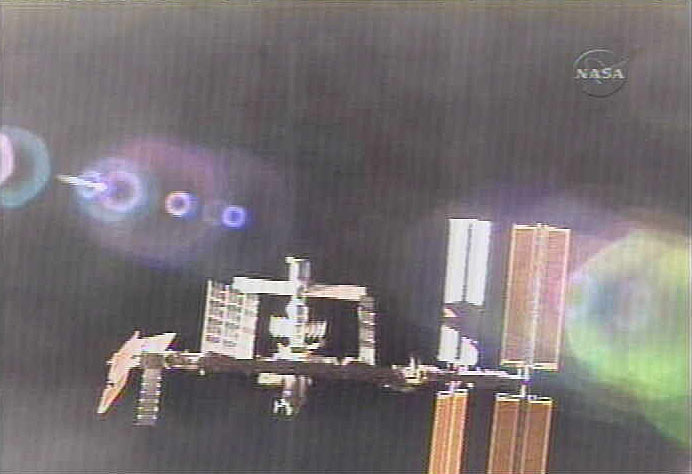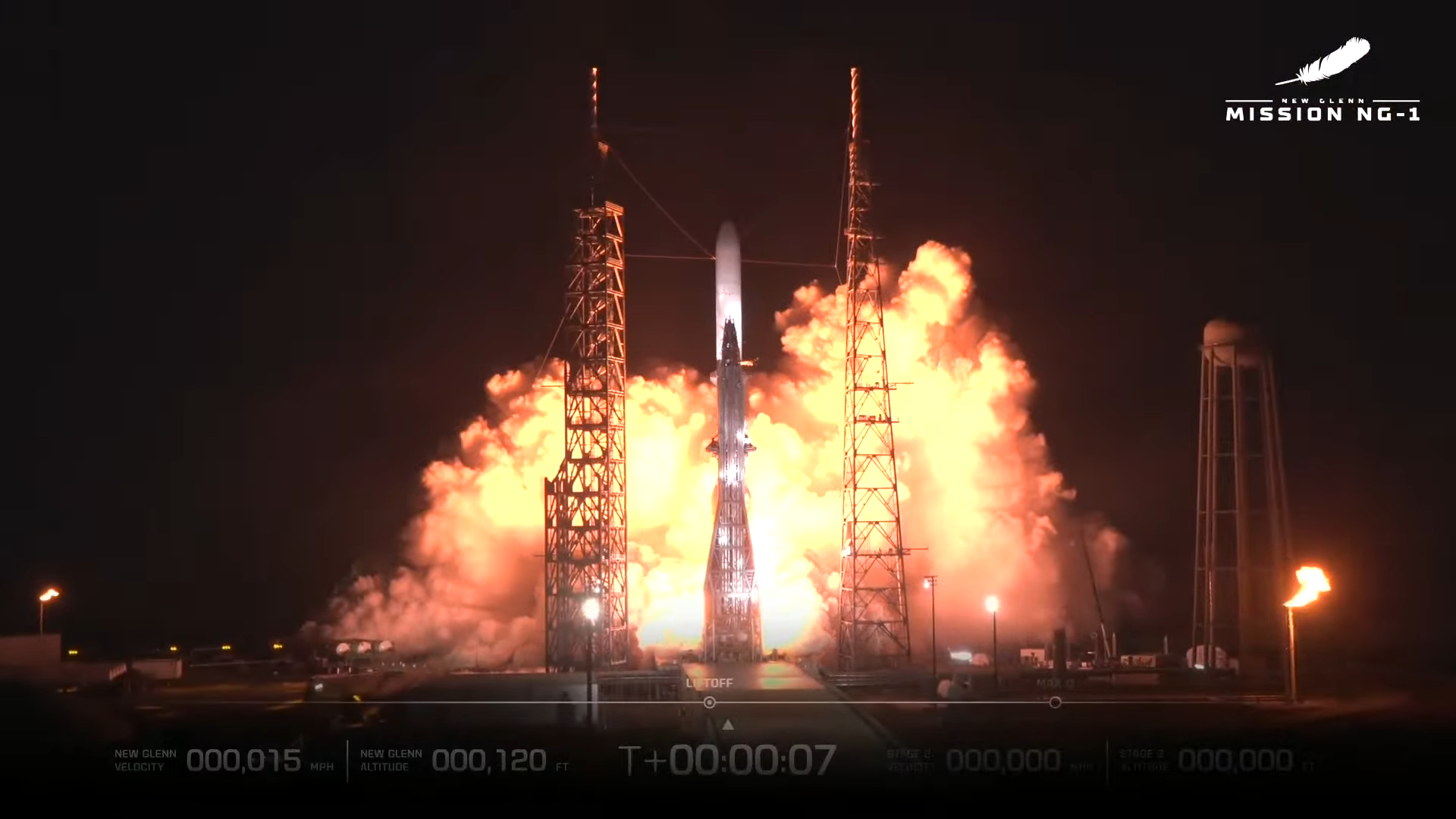Shuttle Crew Undocks From Space Station, Heads for Home

CAPE CANAVERAL -- Astronauts aboard the NASA’sshuttle Discovery undocked from the International Space Station (ISS) earlyMonday, beginning their two-day journey back to planet Earth.
Before departing the space station,the STS-120crew left behind a new bus-sized room, spare parts and the newest member ofthe orbital laboratory’s Expedition 16 team—U.S. astronaut Dan Tani—who replaced fellow spaceflyerClay Anderson after tearfulgoodbyes on Sunday.
"I miss you already. Fly safe,get home safe,” Tani said after Discovery cast off from the spacestation at 5:32 a.m. EST (1032 GMT) while both spacecraft flew218 miles (350 kilometers) above the South Pacific Ocean. "Thanks not only for the great ride up, butalso the last year and a half together. I owe you one."
The multinational crew of astronautsalso relocated a massive piece of the space station's backbone, deployed its oldersolar arrays and carried out an emergency repair when one array wing snaggedand tore during its unfurling.
Commander Pamela Melroyand her crew spent about 10 days docked with the orbital laboratory, which isnow more than 60 percent complete. During those days, she made history as oneof twofemale spacecraft commanders aboard the floating laboratory with ISScommander Peggy Whitson.
"It's just been an honor and aprivilege to share the command of this mission with you," Melroy told Whitson yesterday before sequestering her crew insideDiscovery. The 46-year-old California native also thanked the rest of her crew.
"We simply could not haveaccomplished the mission without everybody's help," Melroysaid Sunday. "This is one that we will always remember."
Get the Space.com Newsletter
Breaking space news, the latest updates on rocket launches, skywatching events and more!
Round your partner
Shortly after slipping away from theISS, Discovery pilot George Zamka guided the shuttle ona victory lap of sorts around the space station, known as a fly-around. Themaneuver helps visually document the progress of the space station and look foranything unusual, such as loose thermal shielding or other issues. It alsogives astronauts their first glimpse of their orbital handiwork to continue ISSassembly.
“You’ve seen the stationgrow before your very eyes and know that you were a part of it,” Melroy said before Discovery’s Oct. 23 launch. “It’salso kind of a dramatic thing to realize that it’s just a snapshot.”
The maneuver began after Zamka slowly drifted Discovery away from the ISSto a distance of 400 feet (122 meters), then propelled the spacecraft into a360-degree loop around the $100 billion space station at a distance of 600 feet(183 meters) while crewmembers inside took photographs.
A computerglitch prevented Zamka from using a trajectory guideto assist his fly-around work. The pilot instead relied on information taken byhand-held instruments operated by his crewmates and other tools as he gentlynudged Discovery’s controls to fly the 100-ton shuttle around the ISS.
“We’reall just cheering Zambo on,” Melroy said, referring to Zamkaby his nickname. “It’s pretty challenging to do this and he’sdoing a fabulous job.”
With the completion of their busyconstruction mission and now successful undocking, the crew is shiftingattention to tomorrow's late inspection of Discovery's shielded underbelly—a now-standard practice since the loss of Columbia in 2003. An earlier inspection and images taken by ISS crewmembers beforeDiscovery arrived at the station yielded no signs of damage.
The operation uses the shuttle'ssensor-packed extension boom to scan the entire shield. Robotic arm operatorswill focus special attention on spots recorded as having possible micrometeoriteor orbital debris impacts (MMOD).
Rick LaBrode,lead shuttle flight director, said sensors detected about nine potential dingsto the shuttle's wing leading edges during the mission. At some point duringthe mission, such debris dinged one of Discovery's 2.5-inch (6.3-centimeter) thick windows.Engineers are analyzing images of the slight damage sent down by Anderson yesterday.
"These are well within thefamily of what we've seen," LaBrode said of thepotential chinks in thermal shielding. "There isn't any concern."
Discovery will hold its orbitalposition in space until after the follow-up heat shield inspection, and couldreturn to the ISS in the event that any serious damage is discovered.
Extended stay
NASA tacked on an extra day to theSTS-120 mission after Tani discovered worrisomemetallic grit in a starboard set of gears, called the solar alpha rotaryjoint (SARJ), used to orient solar wings toward the Sun during a spacewalk.
"As soon as we have time tofocus on the SARJ, we will focus on it," said ISS flight director Heather Rarick on Sunday. She noted that tape samples collected by Tani in the spacewalk "will certainly help" todiagnose the problem and come up with an efficient solution.
The three-person space station crew—Whitson,Tani and cosmonaut Yuri Malenchenko—willperform a series of intense spacewalks starting Friday, now that Discovery hasdeparted to ready the ISS for its next shuttle visit in early December.
They will use the station’srobotic arm to move its shuttle docking port, known as the Pressurized Mating Adapter-2(PMA-2), to Harmony, unhook and relocate the joined Harmony-PMA modules, thenfinish configuring the new room for the arrival of shuttle Atlantis and itsSTS-122 crew before their planned Dec. 8 arrival.
Home in sight
Discovery is scheduled to land hereat NASA’s Kennedy Space Center (KSC) on Wednesday at 1:02 p.m. EST (1802GMT).
Unlike the previous shuttleEndeavour mission in August, whose landing was threatened by Hurricane Dean,Discovery’s planned Earth return faces no significant weather threats atthis time, NASA officials at the JohnsonSpace Center said Sunday.
Weather reports call for a 30percent chance of scattered showers here on Wednesday.
Should ugly weather rear its head,however, Discovery could land at California’sEdwards Air Force Base at 2:28 p.m. EST (1928 GMT) or 4:02 p.m. EST (2102 GMT)Wednesday. The shuttle might also land at Northrup New Mexico’s White Sands Space Harborat 2:31 p.m. EST (1931 GMT) or 4:04 p.m. EST (2104 GMT).
The shuttle could also make anotherattempt to land at KSC around 2:35 p.m. EST (1935 GMT), if necessary.
NASA is broadcasting Discovery'sSTS-120 mission live on NASA TV. Clickhere for mission updates and NASA TV from SPACE.com.
SPACE.com Staff Writer Tariq Malik contributed to this story from New York City.
- SPACE.com Video Interplayer: Delivering 'Harmony' with NASA's STS-120 Mission
- Looking Back on 50 Years of Spaceflight
- Complete Space Shuttle Mission Coverage
Join our Space Forums to keep talking space on the latest missions, night sky and more! And if you have a news tip, correction or comment, let us know at: community@space.com.
Dave Mosher is currently a public relations executive at AST SpaceMobile, which aims to bring mobile broadband internet access to the half of humanity that currently lacks it. Before joining AST SpaceMobile, he was a senior correspondent at Insider and the online director at Popular Science. He has written for several news outlets in addition to Live Science and Space.com, including: Wired.com, National Geographic News, Scientific American, Simons Foundation and Discover Magazine.
